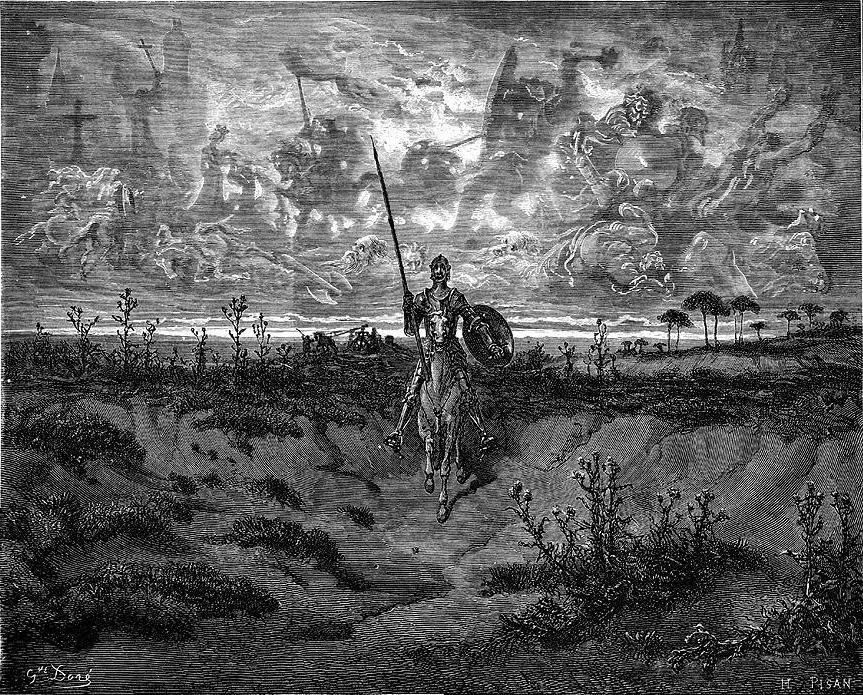
I’ve always known Don Quixote by name, and thought he was a clown. I never understood why a novel about a clown was so popular, even considered one of the greatest ever written, until I read it recently for the first time, and realized who Don Quixote really is: he is everyman.
He dreams of travelling around the world in search of adventures (Having being cooped up at home by the pandemic for two years, I’m beginning to have the same dream); He dreams of making a difference, helping the needy, defending the weak and oppressed. In that sense, he is an idealist, a reformer, an activist, or an escapist.
He believes he is following the example of Jesus and His disciples, for he is on a mission to give aid to the humble and oppose the proud. Despite his good intentions, however, his deeds result in nothing but fiasco. Not only that, many episodes in Cervantes’ book seem to parody Christian religious beliefs and practices of his time, such as chastity, penance, self-flagellation, deliverance of souls from purgatory, and resurrection. Why didn’t the Spanish Inquisition ban the book?
Don Quixote acts like a clown, but talks like an erudite philosopher. Cervantes reminds readers that he is both. After all, there is little difference between the two, for both are born naked, and both end up in the grave. The differences we see between the poor and the rich, the ugly and the beautiful, the foolish and the clever, are but enchantments.
In Cervantes’ world, each person is encaged separately in his own enchantment. Though having eyes to see and ears to hear, they cannot understand one another at all. Nevertheless, steadfast love is shown to overcome, against all odds, the barriers that separate people. For this reason perhaps, Cervantes speaks directly to our time, and his work is timeless.
Don Quixote in Pictures
References:
- Miguel de Cervantes. “Don Quixote”. Translated by John Ormsby. Project Gutenberg. Accessed January 11, 2022. http://www.gutenberg.org/ebooks/996.
- “Gustave Dore: Series – Don Quixote”. WikiArt. Accessed January 11, 2022. https://www.wikiart.org/en/gustave-dore/all-works#!#filterName:Series_don-quixote,resultType:detailed.




























Great book and a great post.
Great review! Thanks for the insights!
HI Cleo,
Happy New Year! 🙂 How are you doing?
I’d like to read your review of Don Quixote, but couldn’t find it.